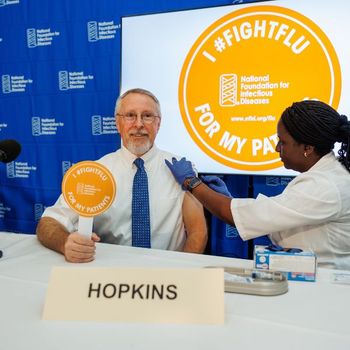
- Infection Control Today, April 2023, (Vol. 27, No. 3)
- Volume 27
- Issue 3
Live-Attenuated, Intranasal Vaccines Candidates for RSV and COVID-19
Could live attenuated vaccines and intranasal vaccines be the answer for RSV, COVID-19, and even cancer tumors?
Vaccines have been top-of-mind and media for the last several years. Some of the different types of vaccines include mRNA, inactivated, subunit, toxoid, live-attenuated virus vaccines, and intranasal vaccines. To learn more about the last 2 types, Infection Control Today® (ICT®) reached out to an expert to explain what they are and what the latest updates are on 2 vaccine trials.
Investigators in a Stony Brook University lab have developed a synthetic biology platform that combines to engineer vaccines for a variety of diseases. Based on an AI-aided algorithm, the software is used to modify hundreds of DNA sites of the wild-type target, so codons produce the same amino acid sequence with lower translational efficiency and virulence, basically weakening the virus completely while preserving its structure intact. This significantly reduces the timeline of development while maintaining the benefits of traditional live-attenuated virus vaccines.
J. Robert Coleman, PhD, MBA, one of the founders of Codagenix, and coinventor of the Codon Deoptimization Platform, spoke to ICT® about this technology, and how live-attenuated virus vaccines and intranasal vaccines can be better than other types, depending on the virus.
Using this technology, investigators are developing intranasal vaccines to boost mucosal immunity, an important part of individual protection against respiratory viruses like COVID-19 and
Coleman explains why intranasal vaccines are preferred for some respiratory viruses. “[The nose] is where the virus comes in and attacks your body. You want to vaccinate, not just providing systemic antibodies that prevent severe disease…we want to create immunity in the nose to provide mucosal immunity, right? When the wild type virus comes there, there's a first level of defense that prevents onward transmission.”
Coleman examines how this unique platform also goes beyond vaccines for infectious diseases and is also being used to develop novel immunotherapies for cancerous tumors (oncolytic viral therapies), and even the ethics that may come with it.
Coleman explains how a live-attenuated, intranasal RSV vaccine candidate CodaVax has received an
“Oncolytic viruses are viruses that people want to use to treat solid tumors,” Coleman explains. “What we found from our prophylactic vaccine side are viruses that we're using for infection control, that we want to vaccinate and block. Here, we found if we use our algorithm appropriately, we can convert viruses into very potent immune-oncology agents. When you stick them into a tumor, the tumor shrinks. And we can do this with a very targeted approach. We've started to publish a lot of work on this. So if you think about what Codagenix is, we're in the virus redesign business. We can redesign the virus genome however we want, converting it into something that is safe, either as a prophylactic vaccine using an infection control, if you will, or we can modulate it in such a way that it prefers a certain tumor type. And it's safe for the cancer patient, but also effective at reheating the tumor or reengage in the immune system to the tumor. It's a very powerful platform that is enabled by synthetic biology and understanding how viruses translate themselves into human hosts.”
Coleman also discusses why RSV vaccines have not been created until now and the disaster of prior trials.
Articles in this issue
over 2 years ago
Bug of the Month: Highly Contagious But Not Deadlyover 2 years ago
Water Management and IP Riskover 2 years ago
Encouraging Professional Development of IPs and Epidemiologistsalmost 3 years ago
Announcing the 2023 Infection Control Today Editorial Advisory Boardalmost 3 years ago
No Dapivirine Ring Safety Concerns in Third Trimester of PregnancyNewsletter
Stay prepared and protected with Infection Control Today's newsletter, delivering essential updates, best practices, and expert insights for infection preventionists.






